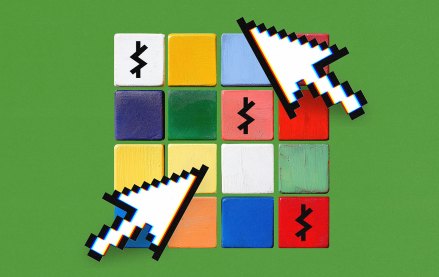As retail media grows, more agencies are implementing their own ways to guide clients

This article is part of a series exploring trends in marketing, media and media buying for 2024. More from the series →
The headlong rush into commerce media — predominantly embodied by the surge of retail media networks launched over the last three years — has been well documented by the B2B press, and Digiday is no exception. As more and more retailers open their data troves to find new ways to monetize them, media agencies (notably the holding companies) have scrambled to assemble commerce or retail media units to help clients navigate this path.
Surprisingly, GroupM’s president of business intelligence Kate Scott-Dawkins revised her estimate of retail media spend downward in her December forecast, to $119.4 billion from $125.7 billion in June — mainly due to a significant slowdown in China. The rest of the world is buzzing.
“Although the U.S. and China are still expected to represent 77.6% of global retail media ad revenue in 2024, they will be among the slowest growing,” wrote Scott-Dawkins in her forecast, predicting 38% growth in Brazil, 24.5% in Mexico, and 22% in France. “By 2028, we expect retail media revenue to exceed that of linear TV and CTV combined.”
Here in the U.S., the media agency focus on retail media networks has been predominantly holding companies going after the big boys and girls of retail — from e-commerce granddaddy Amazon to the Walmarts, Albertson’s, Targets and Instacarts of the world. But so many other retailers have thrown their hats into the proverbial retail media network ring, including United Airlines, Uber, Dollar General and others.
One independent agency formed by 360i veteran Jared Belsky, Acadia, aims to ply the middle market of retail media, having set up specialty retail units for Chewy but is now launching with Kroger Precision Marketing and Ulta. Belsky said he plans to launch with six more retailers in 2024. In essence, Acadia is creating a long tail of sorts for the retail media network space.
Why is Acadia going after the middle market? Marketers (especially the middle-market brands that form Acadia’s sweet spot) need growth platforms where they matter. That will require navigating myriad options to pick the right vertical platforms. They need to master the long tail of retail media, so they need a lot of help.
“For too many, retail media has been synonymous with just Amazon — and indeed, Amazon is a huge story as the largest of the marketplaces,” said Belsky, whose Acadia purchased Bobsled Marketing, which specializes in retail media work, in 2021. “So there’s a truth in it. But, the truth has gone too far, to the point where it’s not in the industry’s or the clients’ best interest to see retail media as Amazon alone. Knowing how to help a client through Chewy is different than helping a client through Walmart, and different helping a client through Instacart.”
Belsky further argues that the first dollar into a specialty marketplace will be far more effective than the last dollar you spend on one of the big guys, and said he’s seen this in search for years. Agencies will tell clients they don’t need Bing, but incremental spending on Google doesn’t give them comparable lift; by contrast, their initial investments with Bing pay off handsomely. “The last dollar into Amazon is always worse than the first next new dollar into Walmart or Instacart.”
Acadia has assembled a global 90-person team led by Kiri Masters, who formed Bobsled Marketing eight years ago and is now head of retail marketplace strategy for Acadia. Masters infused Acadia’s approach with the idea that performance requires a lot of work beyond the buy which can only be done if one is steeped in the mechanics of a client’s business and a platform’s operations.
For example, client Good Wipes, a flushable wipes maker, has been trying to expand in Walmart, but the brick-and-mortar stores have very limited space. “”Even if they had an incredible budget, Walmart [stores are] just too small,” said Masters. “They cannot literally spend trade dollars in the store and get it to go somewhere. But on walmart.com they’re able to invest in brand messaging and media and things like that,” with which Acadia guides the client.”
Tom Spaven, formerly Good Wipes vp of marketing, who’s just left to take a job with Reduce, said the savings achieved by working with Acadia as well as the greater impact with what the brand spends has left him hoping to work with the agency again.
“You can give them a total budget and then ask them to come back with a recommendation on optimal split rather than giving them the budget by channel to play with,” said Spaven, who’s currently working to figure out Reduce’s agency relationships. “Essentially, they’re coming in upstream and helping you build a retail media strategy as opposed to just spending your money for you in the places you tell them to. They just know all the tricks — they are very embedded with the retailers themselves.”
While other midsized agencies are unlikely to match the resources Acadia appears to be putting in, it’s definitely a direction the agency community beyond the holding companies needs to move in. How soon they will follow suit will unfold in 2024. After all, the category will pass $150 billion in 2026, if Scott-Dawkins’ predictions are correct.
More in Media Buying

As Integral Ad Science marks its fourth anniversary on the Nasdaq, speculation mounts over its future
Efforts are underway to take IAS private but there are varying levels of interest from private equity groups.

Media Buying Briefing: Two years later, media buyers still aren’t fully sold on The Trade Desk’s Kokai platform
Two years after its launch, The Trade Desk’s Kokai tool has acquired a mixed reputation among the agency media buyers it was designed for.

The Rundown: The regulatory hurdles still in the way of the Omnicom-IPG merger
British, Australian and EU regulators are all looking into mega agency merger.







